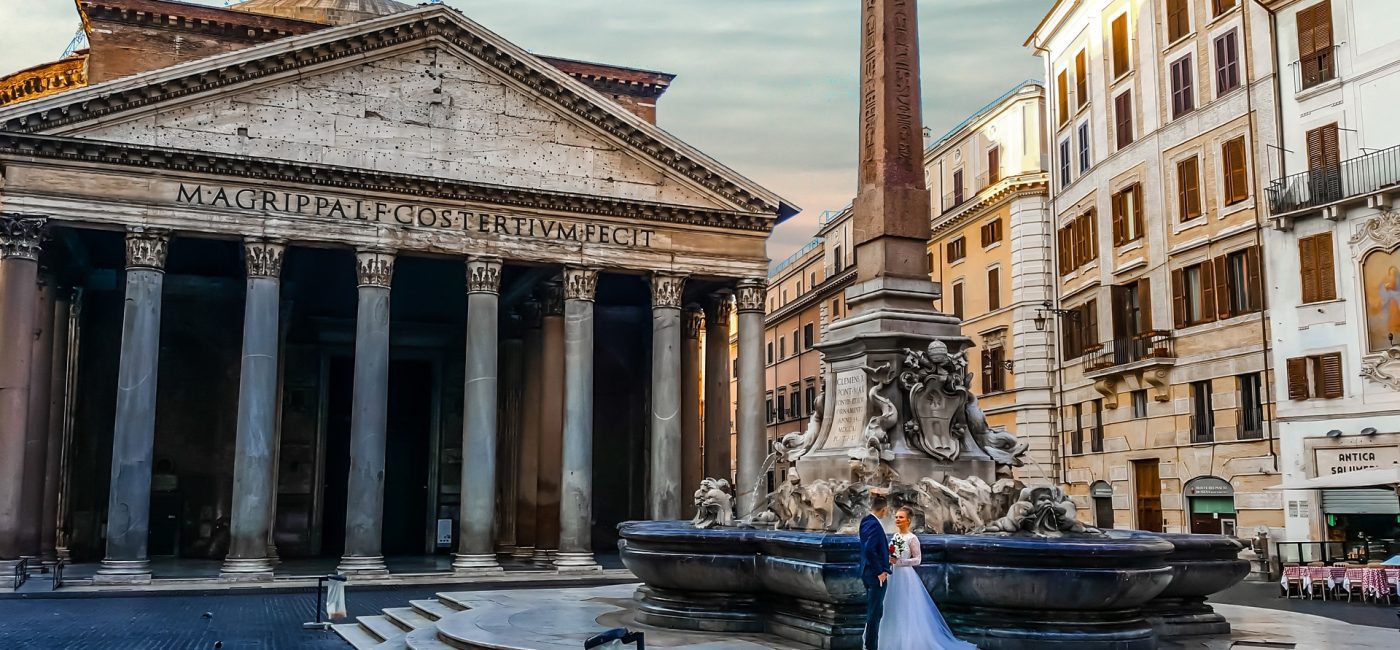Exploring the Architectural Masterpiece that Stands the Test of Time
Nestled amidst the bustling streets of Rome, the Pantheon stands as a testament to the ingenuity and artistry of ancient Roman engineering. This architectural marvel, which has endured for nearly two millennia, is a captivating blend of history, engineering prowess, and spiritual significance. Let’s embark on a journey through time to uncover the secrets and wonders of the Pantheon.
A Glimpse into Antiquity
The Pantheon, whose name means “temple of all gods” in Greek, was originally commissioned by Marcus Agrippa, a Roman statesman and general, around 27 BCE. However, the current structure is not the original one. The Pantheon that we marvel at today was rebuilt by Emperor Hadrian in 126 CE after a fire had destroyed the original edifice. It’s Hadrian’s vision that we witness today, a breathtaking testament to Roman architecture and engineering.
An Architectural Marvel
What sets the Pantheon apart is its remarkable dome, considered one of the greatest feats of engineering in antiquity. The dome’s dimensions are staggering: it has a diameter of 43.3 meters (142 feet), a height equal to its diameter, and a thickness that decreases as it ascends. This engineering marvel held the record for the world’s largest unreinforced concrete dome for over a millennium and remains an inspiration for architects and engineers worldwide.
The oculus, a circular opening at the dome’s apex, adds another layer of wonder. Not only does it bring natural light into the Pantheon’s interior, but it also creates a celestial connection, as if the gods themselves were peering down from the heavens. Rainwater is drained through cleverly concealed channels in the floor, preventing any damage to the structure.
Spiritual Significance
Originally conceived as a temple for Roman gods, the Pantheon has undergone several transformations over the centuries. In 609 CE, Pope Boniface IV consecrated the building as a Christian church, an act that likely contributed to its preservation. This transition into a place of Christian worship helped safeguard the Pantheon from the neglect and decay that befell many other ancient Roman structures.
The Mystique of the Interior
Stepping into the Pantheon is an awe-inspiring experience. The vast, cavernous interior is a testament to the architects’ ingenuity. The harmony between the circular form and the perfect hemisphere of the dome creates a sense of balance and unity that is profoundly moving. As you gaze upwards, the oculus bathes the space in a soft, ethereal light, casting dynamic shadows that dance along the walls.
The walls themselves are adorned with precious marbles and magnificent Corinthian columns that evoke a sense of grandeur and opulence. The floor, featuring a geometric pattern, is made from ancient colored marbles, further enhancing the sense of regality.
A Living Monument
The Pantheon stands as a living monument, a witness to the ebb and flow of history. It has witnessed emperors, popes, artists, and scholars pass through its hallowed halls. Its enduring presence serves as a bridge connecting the past and the present, reminding us of the remarkable achievements of our ancestors.
In conclusion, the Pantheon is not merely a structure of stone and mortar; it is a living testament to the boundless capabilities of human creativity and engineering. Its longevity and continued relevance make it an essential pilgrimage for anyone seeking to connect with the grandeur of ancient Rome. The Pantheon stands, eternal and unyielding, inviting us to step into its hallowed embrace and be transported back in time.
An opportunity to own a villa with historical links to the Vatican
Welcome to Villa “La Contessa”, an enchanting sanctuary nestled in the heart of Rome. This exquisite estate offers a tranquil escape from the bustling city life, combining luxurious family living with breath-taking gardens. Steeped in history and intricately connected to the Vatican, this remarkable property complex lies just moments away from the awe-inspiring St. Peter’s Basilica, spanning an expansive 3 hectares (30,000 sq m) of land.
What truly distinguishes this estate, however, lies hidden behind an iron-cast gate—a precious secret that unveils catacombs deep beneath the grounds. These catacombs hold the remains of two Popes, known as “Two Feliks.” In 274 AD, Pope Felix I was interred there, followed by the addition of the remains of Pope Felix II in 365 AD, infamous for being an antipope. The historical significance of these catacombs has resulted in the keys to the gate being entrusted to the Vatican’s archaeological team – Read more

